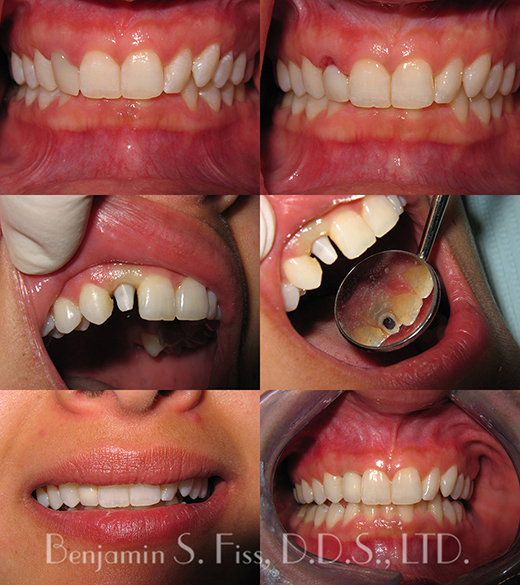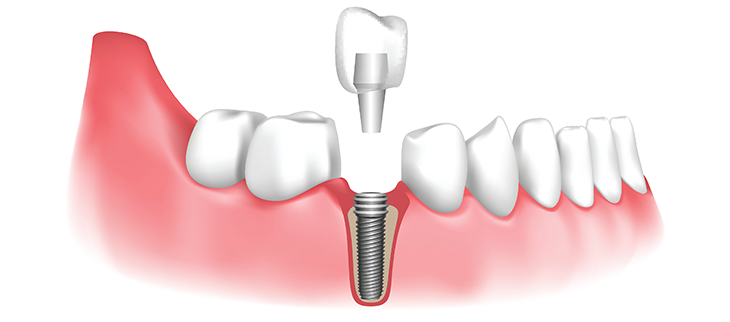Premier Dental Pataskala OH The Advantages, Risks, and Insurance for Dental Implants
Premier Dental Pataskala OH The Advantages, Risks, and Insurance for Dental Implants
Blog Article
Mono Implants Hartford OH Step-by-Step Guide to Dental Implant Procedures
Dental implants for people with gum disease current a singular set of challenges and considerations. Gum disease, also known as periodontal disease, impacts the supporting buildings of the teeth, including the gums and the bone. This condition may end up in irritation and infection, resulting in tissue destruction directory that compromises the steadiness of natural teeth. For people suffering from reasonable to severe gum i thought about this disease, reaching a wholesome foundation is paramount earlier check over here than considering dental implants.

The preliminary step for anybody with gum disease is to seek professional treatment to address the underlying condition. This often entails thorough cleanings generally identified as scaling and root planing, which purpose to remove plaque and tartar buildup that harbor bacteria. In some circumstances, sufferers may require further treatments such as antibiotics and even surgery to revive gum health. Only after the gums have adequately healed and regained stability should one consider transferring ahead with implant placement.
Mono Implants Hartford OH Full Mouth Dental Implants: An In-Depth Overview
Once the gum disease is managed, understanding the extent of the bone loss is crucial. Periodontal disease can lead to the recession of the bone that helps the teeth, making the jaw much less able to accommodate dental implants. A complete analysis, including imaging studies corresponding to X-rays or 3D scans, is crucial in determining how a lot bone is current and whether grafting procedures could also be needed.
Bone grafting is a common process for these with inadequate bone quantity. During this process, bone materials is added to enhance the existing bone structure. This may be produced from varied sources, including artificial materials or the affected person's own bone harvested from one other website. Bone grafting not only creates a solid base for implants but additionally encourages new bone progress within the space.
Dental Care Johnstown OH Types of Dental Implants
After the bone grafting process, you will need to give ample time for therapeutic. This healing time can range depending on the individual’s health and the complexity of the treatment. In some instances, it might take a quantity of months before proceeding with dental implants. Patience throughout this stage is vital as speeding the process can compromise total results and long-term success.
Once adequate bone has shaped, the dental implant procedure can start. The implant, a titanium post, is surgically positioned into the jawbone. This post acts like a root for a replacement tooth, and over time, a course of called osseointegration happens. Osseointegration is crucial for the steadiness of the implant and involves the bone rising around the implant, firmly securing it in place.
Following implant placement, the therapeutic process continues. During this era, the delicate tissues must heal across the implant without infection or issues. Regular follow-ups with a dental professional are important to monitor therapeutic and handle any considerations that will arise.
For people with a history of gum disease, meticulous oral hygiene is crucial both before and after implant placement. Maintaining clear gums and teeth helps prevent re-infection and ensures the long-term success of the implants. This includes regular dental check-ups, day by day brushing, flossing, and sometimes using antimicrobial rinses as really helpful by a dentist.
Premier Dental Sunbury OH Dental Implant Types: Choosing the Right Solution
Factors like smoking and certain medical conditions can adversely have an effect on the success of implants for those with gum disease. Smoking, for instance, can hinder blood flow and healing, whereas conditions like diabetes can decelerate recovery and enhance the danger for problems. Addressing way of life factors is essential to maximise the possibility of profitable outcomes.
The journey of obtaining dental implants as a person with gum disease can be advanced, nevertheless it typically leads to significant enhancements in quality of life. Many people report increased self-esteem, enhanced oral performance, and a renewed sense of confidence. Properly positioned implants can restore the power to eat, speak, and smile without discomfort or insecurity.
In conclusion, dental implants for individuals with gum disease necessitate an intensive understanding of the extra steps required to ensure success (Smile Care Sunbury OH). It includes effectively managing gum health, addressing any underlying bone loss, and sustaining impeccable oral hygiene. With the best method, individuals can obtain lasting outcomes and regain function and aesthetics of their smiles. It is essential to seek the assistance of with skilled dental professionals who can guide sufferers through every step of the process, guaranteeing the very best outcomes
Dentists Condit OH Dental Implant Recovery

- Dental implants can nonetheless be an possibility for people with gum disease, however thorough analysis and treatment are essential prior to the process.
- Addressing gum disease often entails deep cleaning procedures, similar to scaling and root planing, to scale back irritation and promote gum health.
- A multi-disciplinary approach is commonly beneficial; collaboration between periodontists and oral surgeons can enhance outcomes for sufferers requiring dental implants.
- Smoking and poor oral hygiene can exacerbate gum disease and compromise implant success; cessation and improved care are essential for optimum outcomes.
- Bone density assessment is necessary, as advanced gum disease can lead to bone loss, influencing the kind of implant and placement methods used.
- Implants positioned in areas affected by gum disease may require further assist like bone grafting to determine a steady basis for the implant.
- Regular follow-ups may be needed to observe gum health after implant placement, ensuring that the therapeutic course of is continuing without problems.
- Patients with a historical past of gum disease could have a higher risk of peri-implantitis, making diligent oral hygiene an important a half of long-term care.
- Educating sufferers about maintaining periodontal health post-implant reduces the probabilities of issues and improves the longevity of the implants.
- Personalized care plans that embody both restorative and periodontal treatments can enhance the general success charges for implants in gum disease sufferers.undefinedWhat are dental implants, and can people with gum disease receive them?
Dental implants are synthetic tooth roots positioned into the jawbone to assist replacement teeth. While people with gum disease can receive implants, it's crucial to manage and treat the gum disease first to ensure successful integration and scale back the danger of implant failure.
Dental Clinic Galena OH The Advantages, Risks, and Insurance for Dental Implants
How does gum disease have an effect on dental implant success?
Gum disease can compromise the bone and tissue surrounding implants, leading to higher failure charges. Successful implantation depends on healthy gums and bone; thus, addressing and treating gum disease is important before considering implants.
Family Dental Clinic Columbus OH Step-by-Step Guide to Dental Implant Procedures
What therapy options can be found for gum disease earlier than getting dental implants?
Treatment options might embody deep cleaning (scaling and root planing), antibiotics, or extra superior procedures like pocket reduction surgery. These remedies aim to restore gum health, making implants a viable possibility.
Family Dental Clinic Centerburg OH Full Mouth Dental Implants

How long is the recovery process for dental implants in gum disease patients?
Recovery can range, however generally, the healing interval may take a number of months. After the preliminary implant placement, the jawbone wants time to fuse with the implant, and any gum disease treatment prior can also prolong the general timeline.
Are there any risks concerned with dental implants if you have a history of gum disease?
Johnstown Dental Galena OH Understanding Dental Implants: A Comprehensive Guide
Yes, individuals with a historical past of gum disease face greater risks of implant failure, infection, and problems if the disease is not adequately managed earlier than the process. A thorough dental evaluation and treatment plan are essential.
What should I talk about with my dentist before getting dental implants with gum disease?
Discuss your medical historical past, present oral health, treatment options for gum disease, potential risks, and the timeline for each gum disease therapy and implant surgery. Clear communication helps in formulating an effective remedy plan.
Can life-style changes improve the probabilities of profitable dental implants for sufferers with gum disease?
Dental Center Condit OH Dental Implant Surgery
Yes, adopting more healthy habits, similar to quitting smoking, enhancing oral hygiene, and maintaining common dental visits, can considerably enhance the chances of profitable dental implants and general gum health.
Is it potential to have crowns placed on implants instantly if I really have gum disease?
Not sometimes - Dentist Office Sunbury OH. Immediate placement of crowns is often avoided in sufferers with gum disease, as it can increase the danger of complications. It’s finest to allow for therapeutic and proper gum health before attaching crowns
Mono Dental Implants Columbus OH The Benefits of Dental Implants: Why Choose Them?
How usually should I see my dentist after getting dental implants if I previously had gum disease?
Regular follow-ups, typically every three to six months, are important for sustaining dental implants, particularly for these with a historical past of gum disease. Smile Care Columbus OH. These visits help monitor gum health and the integrity of the implants
Report this page